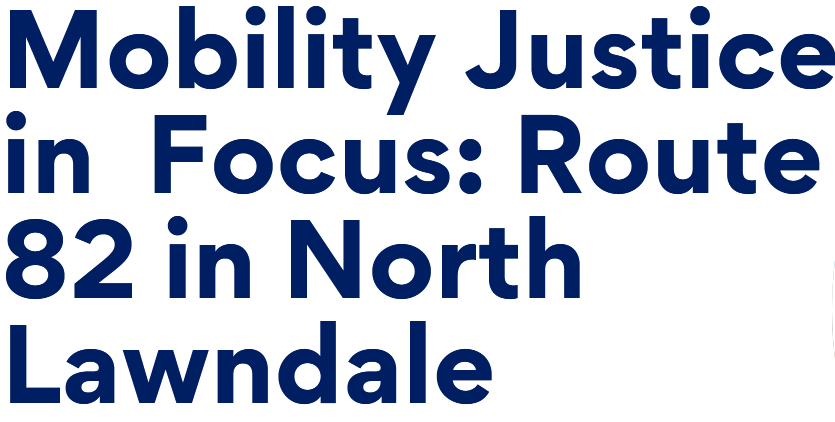Methods
Frequency and reliability only capture part of rider experience on CTA Route 82 in North Lawndale. The presence (or lack thereof) of factors like shade, seating, and sidewalks are critical for both accessibility and comfort. These factors are commonly referred to as bus stop assets. Research shows that the presence of basic assets like bus shelters and benches decreases transit riders’ perception of wait time.55 This is especially true for women, who were more likely to report feeling insecure at stops with low assets.56 Additionally, adding new assets correlates to an increase in overall bus ridership.57 The project team performed audits of Route 82 bus stops in North Lawndale to capture the current conditions and assets.
Bus stop audits capture the accessibility and quality of bus stops. Table 13 describes the process of selecting factors that measure accessibility and quality. Low accessibility and quality pose barriers to riders and degrade the experience of using public transit.
| Accessibility | Quality | |
|---|---|---|
| Guiding Questions |
|
|
The study area audit was conducted through in-person observations of North Lawndale’s 22 Route 82 bus stops. The project team selected assets based on ADA Public Right-of-Way Accessibility Guidelines (PROWAG)58 and Active Living’s Microscale Audit of Pedestrian Streetscapes (MAPS-Mini) tool.59 In total, the audit investigated the presence of 11 basic assets. A copy of the bus stop audit raw data is included in the Appendix. The project team also used this opportunity in the field to collect photos and qualitative observational data on trip hazards, state of good repair, and surrounding buildings.
Results
Each bus stop was scored based on the number of assets. The presence of an asset, such as a bench, resulted in an award of 1 point for that asset category. The exception is the presence of a trash can, where an overflowing trash can results in a score of 0.5 rather than 1. The total points were then divided by the maximum possible number of points (11). Bus stop scores closer to 1 have more assets and therefore higher accessibility and quality. Conversely, bus stops closer to 0 have fewer assets and lower overall accessibility and quality. These scores do not function as a direct comparison. For example, two stops with the same score might have different assets. The individual scores are depicted in Figure 16 and mapped in Figure 17. The appendix contains a spreadsheet of the raw data collected from the study area audit.
The average bus stop score is 0.63, meaning just over half of basic assets are present. Only one bus stop had a score lower than 0.50, meaning less than half of basic assets are present. Of the 22 total Route 82 bus stops in North Lawndale, only two had a perfect score.
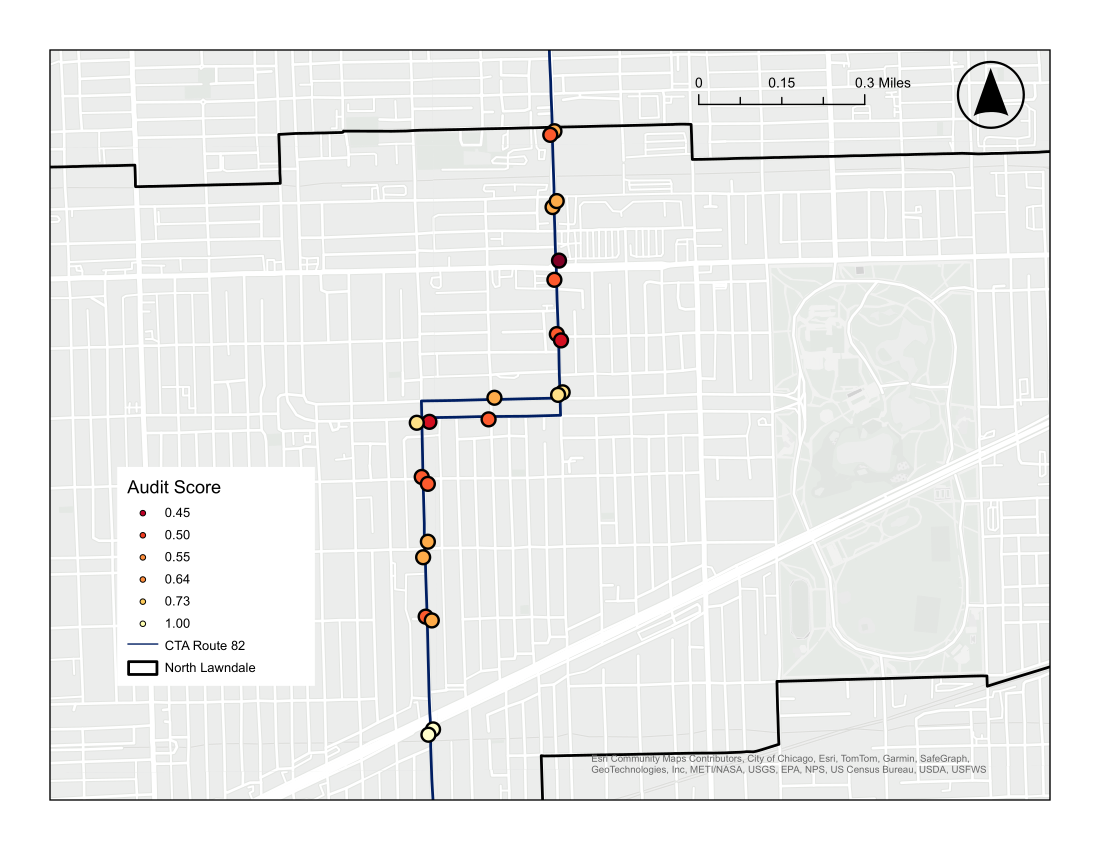
The Route 82 bus stops near the Pink Line’s Central Park station have perfect scores. At Central Park and Ogden, Route 82 riders could wait under protective awnings where seating, trash cans, and lighting were present (see Figure 18).
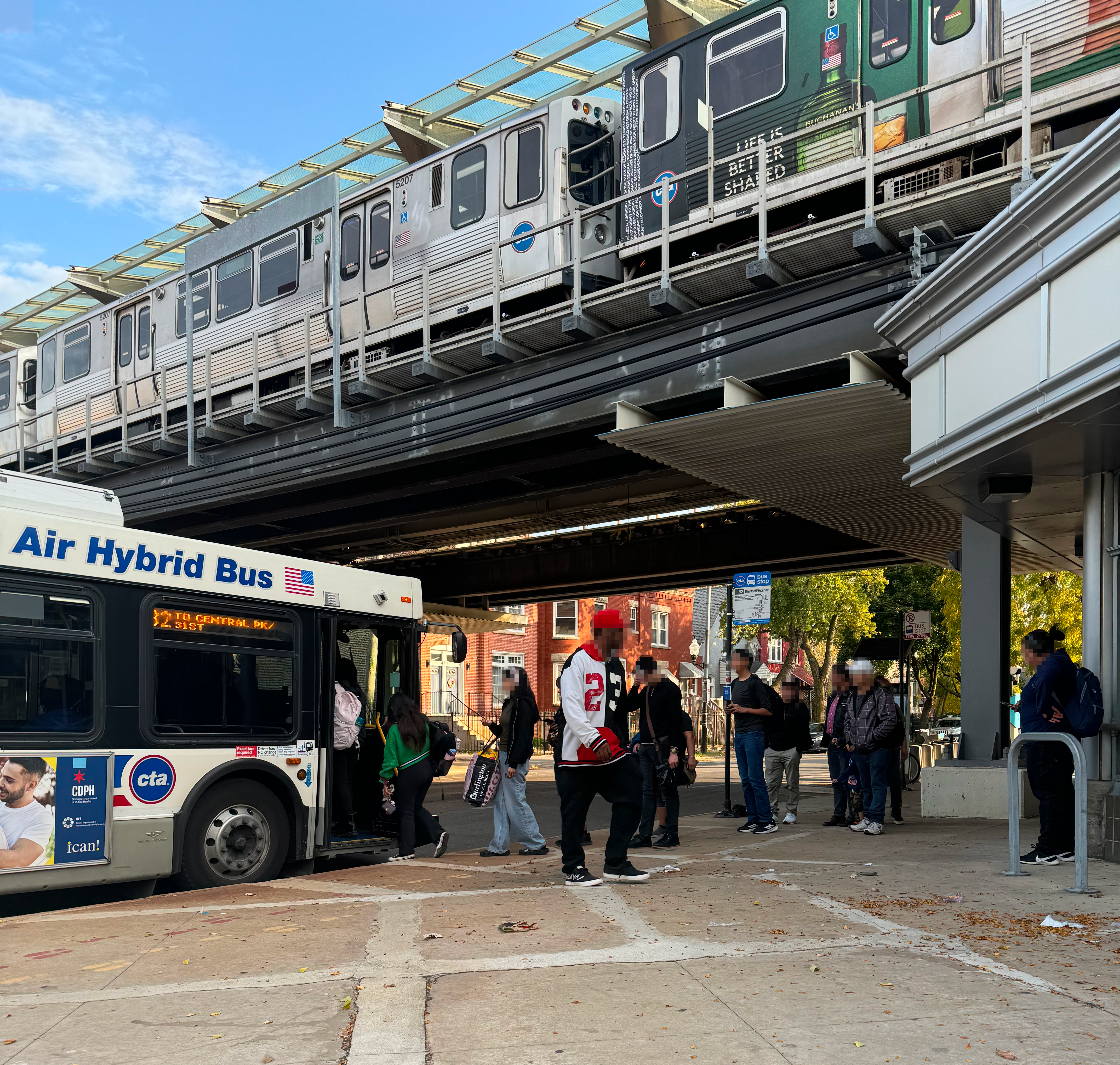
The lowest-scoring bus stop at Homan and Roosevelt (see Figure 19) lacks shelter, shade, and seating. Additionally, there is no significant sidewalk buffer protecting waiting riders from fast-moving car traffic.

The assets present at individual bus stops varies, as shown in Figure 20. Assets related to accessibility, such as curb cuts, sidewalks, and tactile ramps, are present at all North Lawndale bus stops. The least common assets are trash cans, which are present at only 4 of the 22 stops.
A few bus stops had accessibility issues that could not be captured in the audit. At Homan and Fillmore, construction in the parking lane severely affected the stop’s accessibility (see Figure 21). The 82 bus is forced to stop down the block from the bus sign, and on one observed occasion parked cars prevented the operator from moving close to the curb. Riders are forced to step into the street to board the bus. Although temporary, the construction poses a barrier to transit access. At other bus stops, illegal commercial loading was observed. These incidents significantly impact riders who have vision difficulties or use mobility aids.
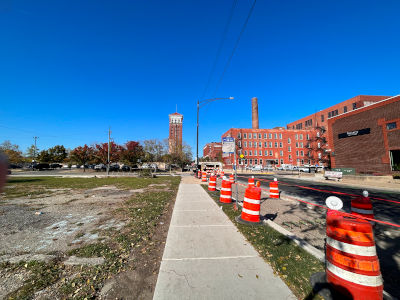
Assets related to quality that provide a more pleasant waiting experience (such as bus shelters, shade from trees or other sources, and benches) are only present at a fraction of bus stops. These assets were occasionally in poor condition even if present. Broken benches and overflowing trash cans (see Figure 22) indicate a lack of care and maintenance by public agencies.
While the most basic needs are met, most Route 82 riders in North Lawndale face uncomfortable waits. Bus shelters are the second-least common asset, and are present at only 23 percent of bus stops. Unsheltered stops do not protect riders from inclement weather such as rain, sleet, or snow. Additionally, more than 70 percent of stops are unshaded, with neither trees nor built structures providing relief from the sun. The project team observed riders at Route 82 bus stops struggling to wait comfortably at bus stops without benches, shade trees, or shelters. Figures 22 and 23 show bus stops lacking these assets.
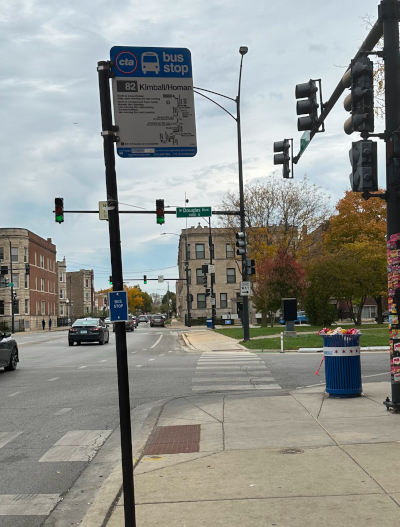
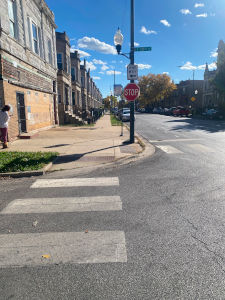
The urban heat island effect makes paved, unshaded, and tree-deficient urban areas more susceptible to extreme temperatures. Many North Lawndale bus stops along Route 82 fit this description perfectly, which leads to uncomfortable or dangerous waits times. By mid-century Chicagoans will experience ten times the amount of days over 95°F. It is crucial to mitigate urban heat with proven cooling solutions where transit riders need them most.
Discussion
Overall, the study area audit found a lack of quality-based assets at North Lawndale bus stops. Bus stops were largely physically accessible, with sidewalks, curb cuts, tactile ramps, marked crosswalks, and streetlights present at 86 percent or more of the locations. However, shelters, benches, and trash cans were among the least common assets (see Figure 24). When present, these assets were often in poor condition, like at Homan and Arthington in Figure 25.
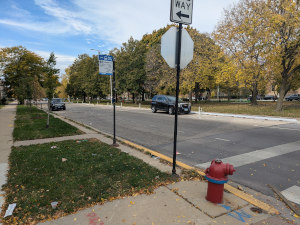
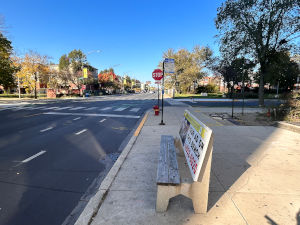
The absence of bus shelters and benches is alarming given the lack of tree cover, high transit rider vulnerability, and the high proportion of disabled residents in North Lawndale. To improve safety and the quality of rider experience, this report recommends increasing the presence of bus stop assets, addressing reliability, and further enhancing the level of service frequency. Riders in North Lawndale are more vulnerable to severe heat than other community areas along Route 82. Furthermore, Route 82 riders experience excess wait times, bus bunching, and big gaps more often than other CTA bus routes. Mobility justice demands that North Lawndale riders don’t just deserve equivalent service, but enhanced service. The low car access and high proportion of residents with disabilities compared to Chicago underscores this need. Adding benches, shelters, and shade trees can help mitigate the risk posed by extreme heat and provide the basic comforts that riders with disabilities are entitled to. Quality bus stop assets also improve rider experience, perceived safety, wait times, and overall ridership.
Increasing the level of service frequency and reliability can also mitigate the sensitivity to extreme heat. A higher frequency of buses translates to riders spending less time outside in extreme temperatures. The current gap between scheduled service frequency and reliability presents a particularly dangerous scenario for riders. An unreliable bus headway leads to unexpected, extended wait times in dangerous conditions. The high density of transit connectivity in North Lawndale and other community areas along Route 82 underscores the route’s importance to the transit system and justifies higher bus frequency, as does the spatial inequity and lower access to opportunity residents have relative to more invested locations.
Continue Reading: Conclusion
